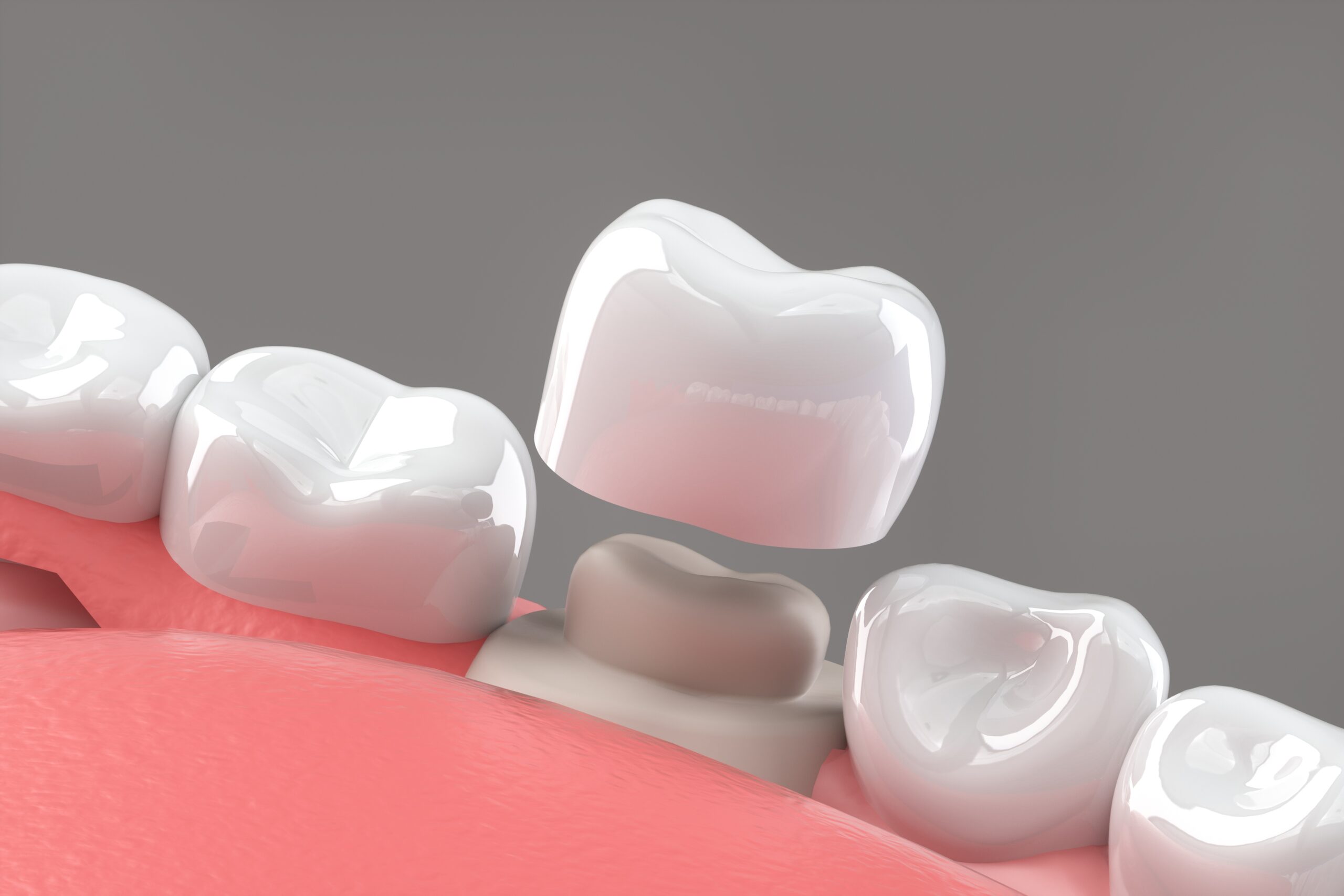Dental crowns and bridges are used to fix damaged or missing teeth, and they require good habits to last a long time. A crown covers a weakened tooth, while a bridge replaces missing teeth by anchoring to nearby teeth or implants. The durability of these restorations depends on daily care, diet, and regular dental visits. Here are some tips you can follow at home and with your dentist to keep your teeth healthy:
Brush Twice Daily
Dental recommendations are similar to those for regular teeth. Start by using a toothbrush and a fluoride toothpaste; these tools may help reduce plaque at the crown margins, where decay can appear. Brush for two minutes, twice a day, and angle the bristles toward the gum line. Short, gentle strokes reach along the edges without scraping the gums. Electric brushes may deliver a more consistent motion, and a pressure sensor helps protect tissues.
Replace the brush head every three months or after illness. Morning cleaning removes overnight buildup. Nighttime brushing clears food debris before sleep, when saliva flow drops and acids linger. Target the bite surfaces, the outer sides, and the inner curves, moving methodically from molars to front teeth. Rinse the brush, store it upright to dry, and avoid sharing it. These small steps may limit wear on the porcelain and reduce risk around the margins.
Floss Regularly
While brushing reaches broad surfaces, floss threads into the spaces a brush misses, and it disrupts bacteria along the gum line. Use waxed floss, floss picks, or a water flosser; bridges can benefit from a floss threader or super floss with a stiff end. Slide the floss gently between teeth, curve it into a C-shape against each tooth, and glide below the gumline with light pressure. Do not snap the floss, as that may traumatize the papilla.
Around a bridge, guide the thread under it to sweep away trapped food and scrub the underside effectively. Daily flossing supports healthy gums, which stabilize the abutment teeth and distribute bite forces evenly. If fingers struggle to reach, a handled flosser or water flosser provides access. Expect mild tenderness at first; it typically fades as the tissues adapt within several days. Stay consistent, as irregular cleaning can lead to rapid plaque rebound.
Get Exams Twice Per Year
Regular exams detect early changes, and professional cleanings remove hardened deposits on crowns and bridges. Your dentist may use an explorer to check the crown margins, assess bite contacts with articulating paper, and review X-rays to detect decay beneath restorations. They may scale tartar, polish stains, and guide you on technique.
Schedule visits approximately every six months; however, some patients may require more frequent visits due to a history of gum disease, dry mouth, or excessive plaque formation. Report symptoms such as temperature sensitivity, food catching at a crown edge, a chipped porcelain surface, or sore chewing. Use the following adjustments:
- Bring any retainers, night guards, or partials to each visit for inspection and fit checks.
- Ask for a demonstration of floss threaders around bridges to improve your home routine.
Maintain Crowns and Bridges
Diet choices matter, and they influence wear patterns. Limit frequent sipping of acidic drinks, such as soda, sports beverages, and citrus water. Choose water between meals, and keep sticky candies or hard nuts to small, infrequent portions to reduce force spikes. Avoid using teeth as tools to open packages. If you have crowns or bridges and would like personalized guidance, schedule an appointment with your dental provider today to review your routine, assess the fit, and plan your next preventive visit.
